Origin legends
There are several beliefs about the origin of the Lantern Festival. However, its roots trace back more than 2000 years ago and is popularly linked to the reign of Emperor Ming of Han at the time when Buddhism was growing in China.
Emperor Ming was an advocate of Buddhism and noticed Buddhist monks would light lanterns in temples on the fifteenth day of the first lunar month. As a result, Emperor Ming ordered all households, temples and the imperial palace to light lanterns on that evening.
From there it developed into a folk custom. Another likely origin is the celebration of "the declining darkness of winter" and community's ability to "move about at night with human-made light," namely, lanterns. During the Han Dynasty, the festival was connected to Ti Yin, the deity of the North Star.
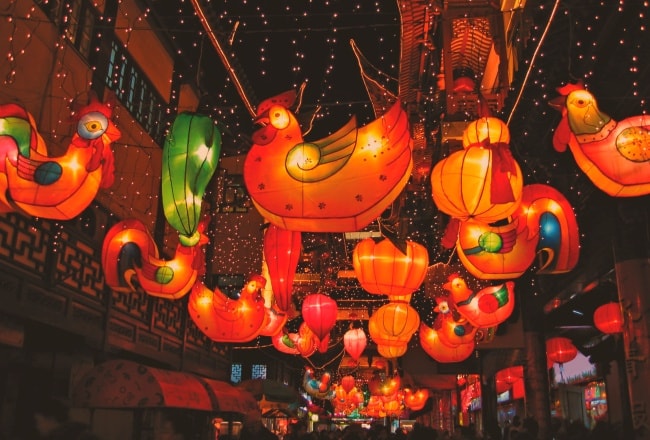
Another legend concerning the festival’s origin tells the tale of the Jade Emperor (You Di), who became angered at a town for killing his beautiful crane. He planned to destroy the town with fire, but he was thwarted by a fairy who advised the people to light lanterns across the town on the appointed day of destruction.
The emperor, fooled by all the light, assumed the town was already engulfed in flames. The town was spared, and in gratitude the people continued to commemorate the event annually by carrying colorful lanterns throughout the town.
Whatever the legends you may read about, its roots always link to the ancient China.
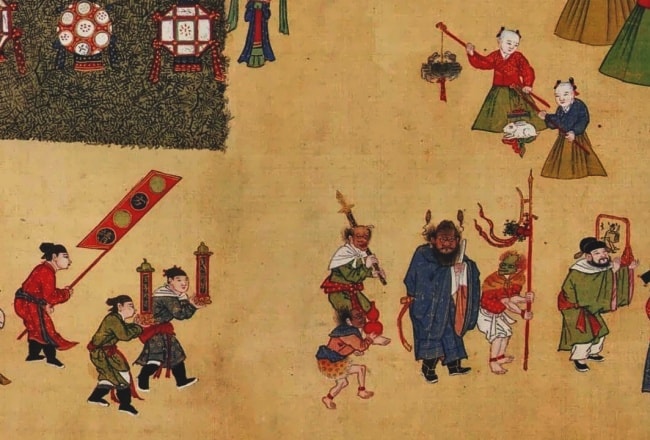
Top 10 epic Asian Lantern Festivals
From China, the festival was spread to many other countries in Asia. Below is the top 10 epic Lantern Festivals in Asia that you should not miss.
China Lantern Festival
Originated in China, the biggest lantern festival is held here.
Falling on the 15th day of the first lunar month, Lantern Festival is the first significant feast after Chinese New Year, so called because the most important activity during the night of the event is watching various wonderful Chinese lanterns.
And because every household eats yuanxiao (a rice ball stuffed with different fillings) on that day, it is called Yuan Xiao Festival. For its rich and colorful activities, it is regarded as the most recreational among all the Chinese festivals and a day for appreciating the bright full moon, and family reunion.
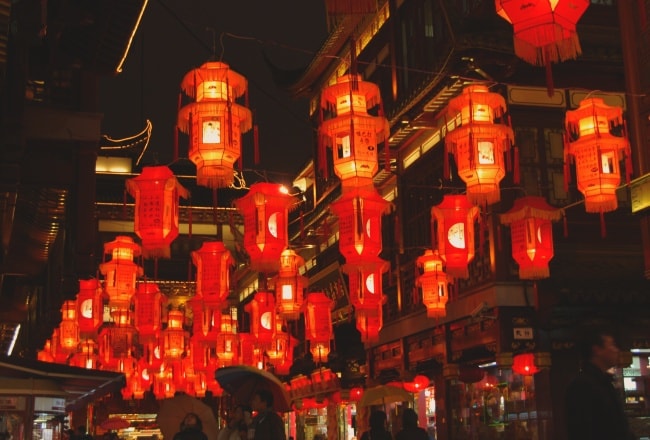
Hoi An Lantern Festival, Vietnam
The Hoi An Lantern Festival is a monthly event that celebrates the full moon. The full moon is one of the most sacred times in the Buddhist calendar. It is said that Buddha was not only born on a full moon but attained enlightenment on a full moon. And so for centuries Buddhists have viewed the full moon as an auspicious time of transformation.
Even today people all over Asia view the full moon as a time to meditate, observe rituals, reflect on life and worship their ancestors. This is done in many ways from offerings made at family shrines to the burning of incense and the lighting of candles. In recent years these traditions have morphed into the popular Hoi An Lantern Festival.
Check out more detail about Hoi An Lantern Festival
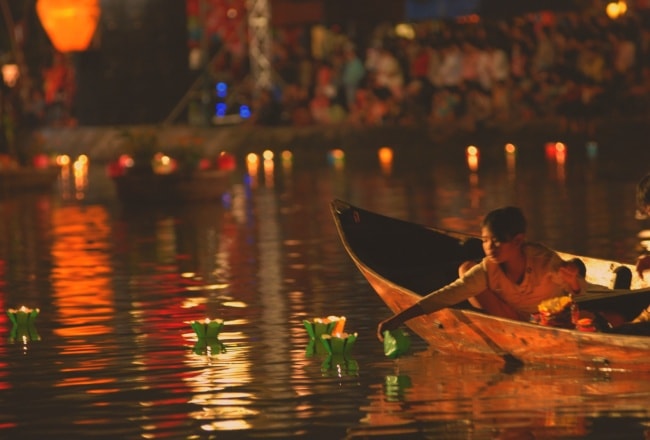
Diwali – The Festival of Light, India
When it comes to festivals, India gives the rest of the world a run for its money.
The Hindu Festival of Lights — also known as Diwali — is proof.
Observed primarily by Hindu people in India, this autumn event is all about celebrating the triumph of light over darkness and good over evil, which is why millions gather each year to light up the whole country.
This epic, light-dappled, five-day fest may use everything from clay lamps and candles to hanging lanterns and fireworks, but the celebrations also include the release of sky lanterns to light up the night sky.
More detail, please check the website: www.diwalifestival.org
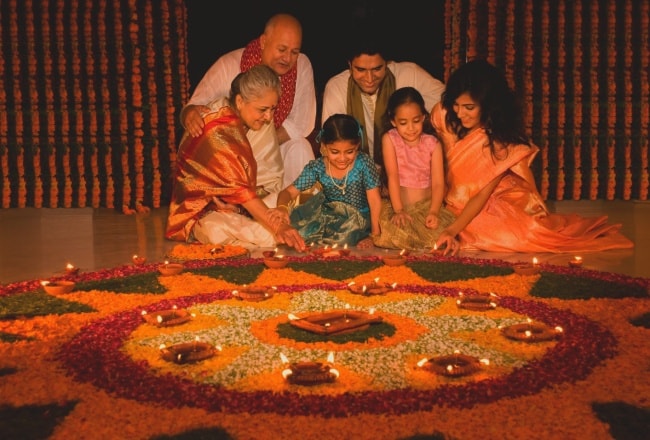
Yi Peng Festival & Loy Krathong Festival, Thailand
Two lantern festivals turn Thailand into a twinkling wonderland, typically around November. Sukhothai and Bangkok celebrate Loy Krathong by sending off floating lotus baskets, full of candles, into the waters.
Yi Peng is more prevalent in the north, especially in Chiang Mai, and it takes place the same day as the latter. However, sky lanterns define this event, and they are constructed of bamboo and rice paper.
Travelers from all over the world flock in the thousands to Chiang Mai, Thailand, to participate in, witness and document the revelries of the Yi Peng Festival.
The two festivals are performed for several reasons: to show reverence to Buddha, to acquire Buddhist merit and to symbolize one’s troubles floating or flying away.
During the event, participants not only release floating or flying lanterns from the Lanna Kingdom period (1292-1775 AD); denizens also adorn their temples and houses with them, too.
Check out more detail about Loy Krathong & Yee Peng Festival
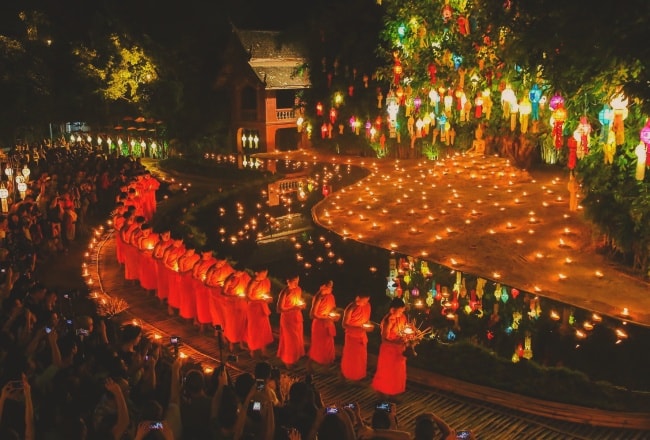
Pingxi Sky Lantern Festival, Taiwan
Each year, Pingxi Sky Lantern Festival rings in the start of spring in Taiwan’s pastoral district of Pingxi. The event, executed in conjunction with Yanshui’s fireworks display — an annual tradition for good health in the new year — was originally established to signal the townsfolk’s safe passage into a blessed new year.
This beautiful belief is still very much a part of the light-filled practice, which has since blossomed into a proper annual festival hosted by the Taiwan Tourism Bureau. Though the release of 1,200 lanterns is the center of the festivities, other vibrant goings-on are also on the itinerary, including folk performances and carnivals.
For more detail, please check the website: skylantern.ntpc.gov.tw
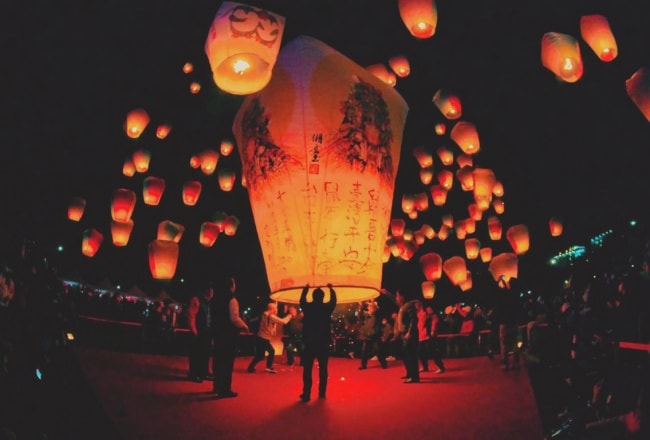
Vesak Day, Indonesia
Buddha’s birth is one of the most important events of the Buddhist calendar, and in Indonesia, Buddhist communities commemorate the birthday with Vesak Day in May.
To celebrate, hundreds upon hundreds make the pilgrimage to Borobudur — a Mahayana Buddhist temple (the world’s largest) located in Java — bringing with them celebratory offerings.
Others come to witness the release of approximately 1,000 sky lanterns by the monks at the height of the event.
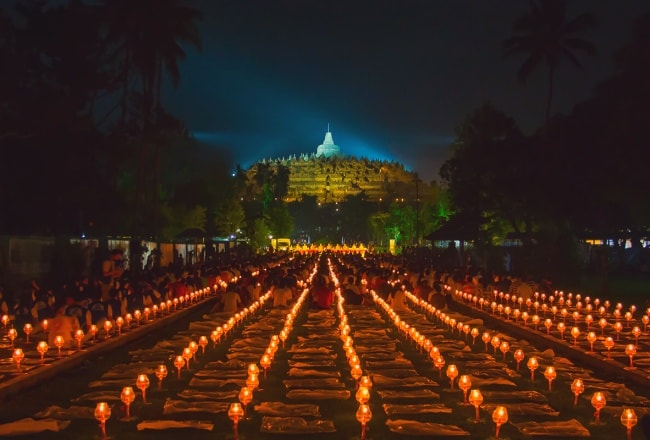
Kaga Yuzen Toro Nagashi, Japan
Japan has its share of floating lantern festivals. But if travelers want to mix things up, they can choose to celebrate Kaga Yuzen Toro Nagashi, which incorporates “flowing lanterns.”
The festival is a little different from most sky-lantern festivals. Instead of lanterns suspended in air, these lit, square paper lanterns float on the Asano River in the city of Kanazawa, located on Japan’s north-central coast. They’re meant to light up the spirits’ path as they make the journey to the afterlife.
The sacred fest is held on the first Saturday in June.
For more detail, please check the website: www.visitkanazawa.net
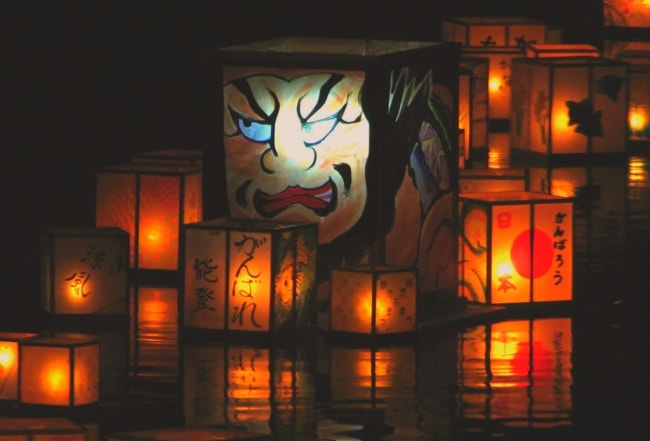
Thadingyut Festival of Lights, Myanmar
This festival is held on the full moon of Thadingyut in October marking the end of Buddhist Lent. The three-day Festival of Lights during Thadingyut symbolizes the return of the Buddha from heaven while angels are lighting the path of his descent to earth.
During these days pagodas are crowded with people. The country is covered in colored lights and candles to welcome Buddha’s descent from heaven. The streets are full of people strolling through the markets and food stalls. They celebrate this time with traditional open-air performances and concerts.
It is the end of Buddhist Lent, and it means there is an abundance of music and dancing everywhere. It is not only a time of joy but also of thanksgiving and paying homage to teachers, parents, and elders, and asking pardon for any committed misdeeds.
The celebration can be experienced at its most splendid in Yangon or at Inle Lake
Check out more detail about Thadingyut Festival
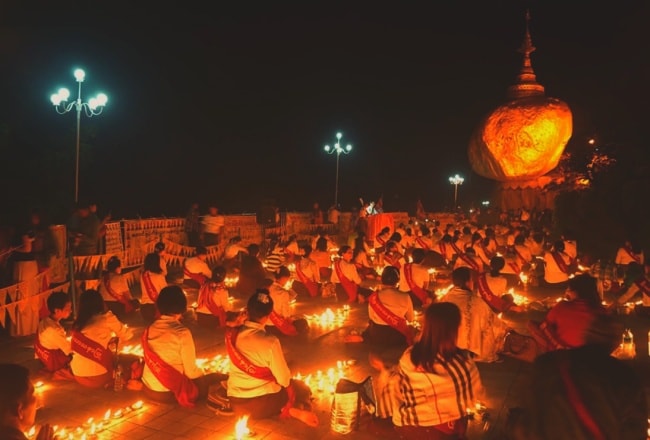
Boun Lai Heua Fai – Festival of Light, Luang Prabang, Laos
Lai Huea Fai, also referred to as The Candlelight Festival or The Festival of Lights, is the festival that takes place at Boun Awk Phansa. Like other Laotian festivals, it blends together Animist and Buddhist traditions.
It is believed that the ceremony originated as a way to pay homage to the river deities and their spirits. However, now small 'boats of light' are floated down the river to signify the letting go of any immoral thoughts and actions, such as greed and anger, over the past year.
These small boats known, as 'Krathongs', are made from a banana tree trunk, acting as a base, and decorated with various flowers and candles. At the water's edge, wishes are murmured before they are let go to float down the river.
Check out more detail about Boun Lai Heua Fai
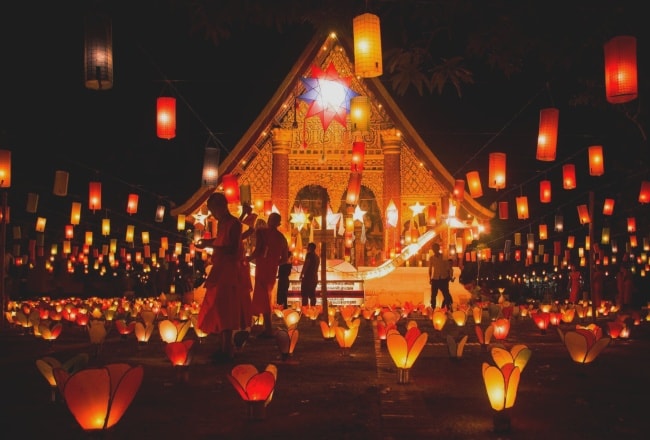
Bon Om Touk or Water Festival, Cambodia
The Cambodian Water Festival (Bon Om Touk) takes place once a year, on the full moon of the Buddhist month of Kadeuk (usually in November). It celebrates a major natural occurrence: The reversing flow between the Tonle Sap and the Mekong River. This natural occurrence is celebrated in Cambodia with three days of festivals, fluvial parades, boat races, fireworks, and general merriment.
People come from far and wide to join the celebrations. Upwards of a million Cambodians attend the celebrations at Phnom Penh to take in the wholesome carnival atmosphere. Food and drink overflow in the streets, Khmer pop bands entertain the crowds, and the riversides are packed to capacity with punters cheering their favorite boats on.
Bon Om Touk is celebrated on the full moon of the 12th month of the Khmer lunar calendar.
Check out more detail about Bon Om Touk




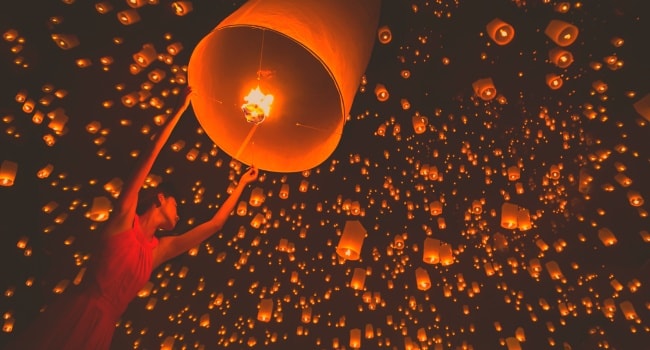

 05/01/2026
05/01/2026




























Jolie LIEMMy name is Jolie, I am a Vietnamese girl growing up in the countryside of Hai Duong, northern Vietnam. Since a little girl, I was always dreaming of exploring the far-away lands, the unseen beauty spots of the world. My dream has been growing bigger and bigger day after day, and I do not miss a chance to make it real. After graduating from the univesity of language in Hanoi, I started the exploration with a travel agency and learning more about travel, especially responsible travel. I love experiencing the different cultures of the different lands and sharing my dream with the whole world. Hope that you love it too!